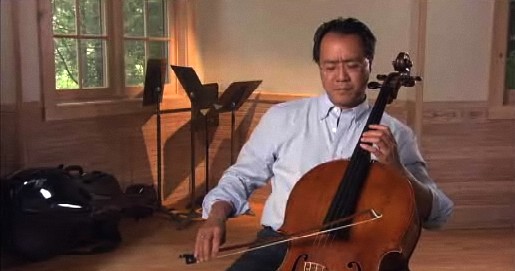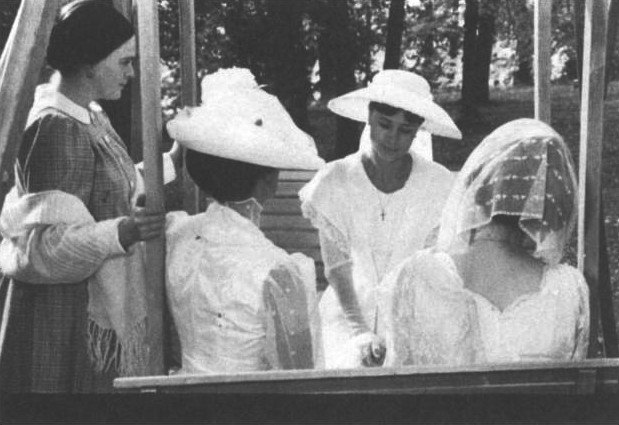
M any movements from Bach’s unaccompanied string works contain implied polyphony. Although earlier approaches describe this technique as a way of using arpeggiation to embellish a melodic line, to disguise an otherwise unacceptable melodic progression, to delay the resolution of dissonance, or to create underlying voice-leading patterns, these descriptions cannot account for the variety and complexity of the implied polyphony in these pieces. ...[using analysis based on auditory stream-segregation techniques, I come to the conclusion that—] Bach did not treat implied polyphony as solely a melodic feature. He instead used implied polyphony to apply irregular accent patterns to the otherwise ‘isochronous’ surface of the music, thereby creating perceived rhythmic variety at the fastest levels of the metric hierarchy.”I n the sarabandes of Bach’s cello suites, the second beat can be risky, easy to miscalculate. If you start the bow at the frog, instead of towards the middle, you’ll run out of bow on the two-beat upbow. The planning about distribution or budgeting of the bow is critical. You must maintain the pulse on the larger beats... this is far harder to do if you’ve chosen too slow a tempo. Difficult for the cello to maintain a steady pulse because of the many stops in these movements, especially the D major sarabande!
— Stacey Davis.
D ouble and triple and quadruple stops: a single part expressing several voices—and the registral placement of these voices doesn’t necessarily duplicate their placement in the underlying voice-leading. Dissonant, tension-creating intervals come from octave displacements in the voice-leading; notes out of the key of the piece to invoke/allude-to/tonicize another key before returning to the home key. And the bass line is not continuous! There are gaps, suspensions, and resumptions that take an eternity to arrive. The continuity of the voices the cello is speaking is tenuous, vulnerable, intermittent, waiting to be confirmed—even if the vulnerability only lasts a few beats. So much risk!
I n the D major sarabande, keep the high C in measure 13 in your mind throughout this and the following measure. The C returns in measure 14, and must sound as if it had been held throughout both measures, like loving parent returning to worried child left briefly alone.
Y o-Yo Ma’s beautiful sarabande-as-encore: dark; warm; transparent. Cello emulates the human voice; proposes spiritual communion between people. Communes with them—as close as a single body; reaches out and touches with sound. Generously melds with the strangers; friends them; speaks as if you and they had known each other for a long time—like kin, like lovers. Remember that small actions that may be heard clearly in a small venue may not communicate to an audience in a larger auditorium. You must not worry that large actions are maybe likely to be construed as ‘false’ or ‘suspicious’ ones. Acting is believing! Honest human behavior is sometimes enormous! And so long as you conduct yourself truthfully in imagined circumstances, no matter how large your expressions, the audience will believe you.
S uch intimacy and risk-taking and bigness-of-spirit are surely the essence of a perfect encore, whether from a student or from a master! And that—a perfect encore—is precisely what we received on Saturday night...

- Yo-Yo Ma website
- Butt J. Bach Interpretation. Cambridge Univ, 1990.
- Carrington J. Trills in the Bach Cello Suites: A Handbook for Performers. Univ Oklahoma, 2009.
- Cohen D, Wagner N. Concurrence and non-concurrence between natural and learned schemata: The case of J.S. Bach’s Sarabande in C minor for Cello Solo. J New Music Res 2000;29:23-36.
- Davis N. The Baroque violoncello and the Unaccompanied Cello Suites of J.S. Bach, BWV 1007-1012. Ph.D. dissertation, NYU, 1986.
- Davis S. Stream segregation and perceived syncopation: Rhythmic effects of implied polyphony in Bach's unaccompanied string works. MTO 2011;17(1).
- Egoyan A. Bach Cello Suite No. 4: Sarabande (Rhombus, 1997.)
- Harnoncourt N. Baroque Music Today: Music as Speech. Amadeus, 1982.
- Ledbetter D. Unaccompanied Bach: Performing the Solo Works. Yale Univ, 2009.
- Lim J-M. A performance guide to J.S. Bach’s Suite No. 5 for violoncello solo: The interpretation of ornaments, rhythm, bowing and phrasing, and polyphonic texture. DMA dissertation, Univ Cincinnati, 2004.
- Little M, Jenne N. Dance and the Music of J. S. Bach. Indiana Univ, 2001.
- Ma Y-Y. Inspired by Bach: Unaccompanied Cello Suites. (Sony, 1998.)
- Ma Y-Y. Unaccompanied Cello Suites Complete. (Sony, 2010.)
- Marckx L. French Baroque influence on Johann Sebastian Bach’s Six Suites for Violoncello Solo with an emphasis on French court dance and Suite V. DMA dissertation, Univ Washington, 1998.
- McDonald T. Yo-Yo Ma, Symphony combine for unforgettable night. Kansas City Star, 21-JAN-2012
- Mellers. Bach and the Dance of God. Oxford Univ, 1981.
- Minsky A. Ten International Cello Encores. Oxford Univ, 2009.
- Siblin E. The Cello Suites: J. S. Bach, Pablo Casals, and the Search for a Baroque Masterpiece. Atlantic, 2009.
- Todd R. The sarabandes from J.S. Bach’s six Suites for solo cello: An analysis and interpretive guide for the modern guitarist. DMA dissertation, Univ North Texas, 2007.
- Tschofen M, Burwell J, eds. Image and Territory: Essays on Atom Egoyan. Wilfred Laurier Univ, 2006.
- Whitman D. When Slava met Yo-Yo [in 1976]. Punditwire, 28-JUN-2011. [“No, your real name.”]
- Winold A. Bach’s Cello Suites: Analyses and Explorations. Indiana Univ, 2007.
- Video of Yo-Yo Ma performing Bach Cello Suite No. 5 in C minor, BWV 1011, “Sarabande”, on PBS.org
- Bach scores at IMSLP.org
- cello.org
- Kansas City Symphony

No comments:
Post a Comment